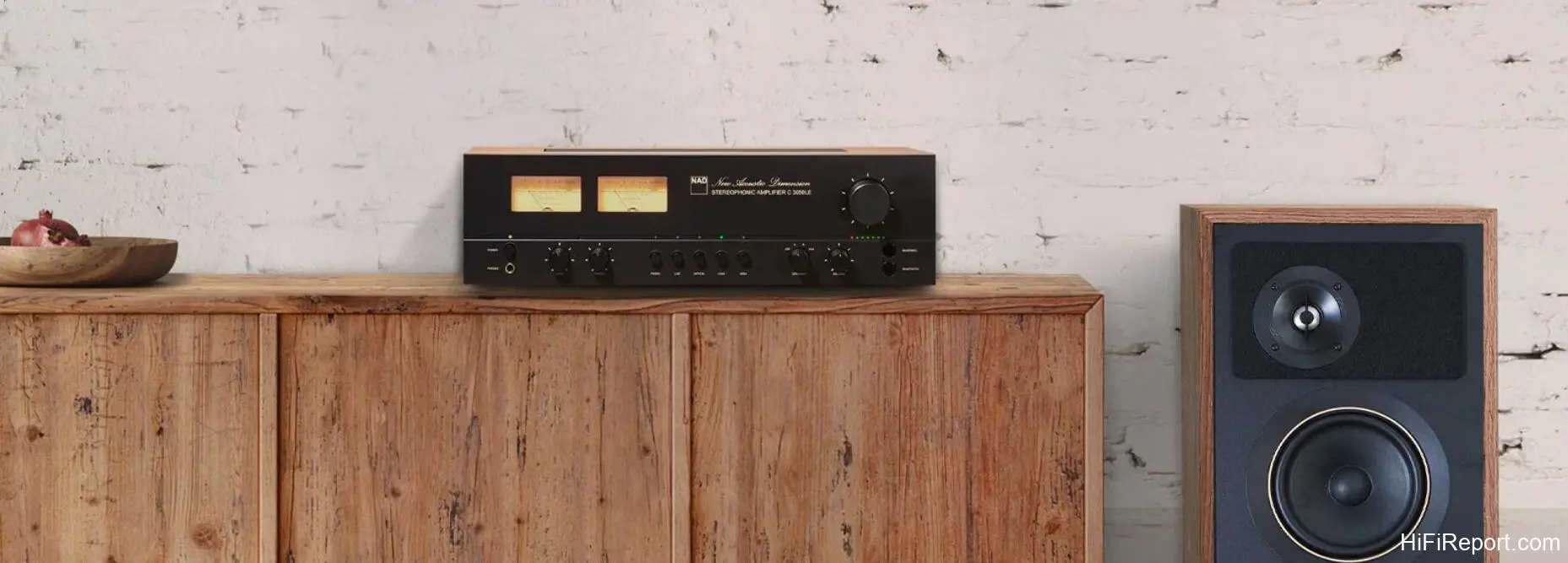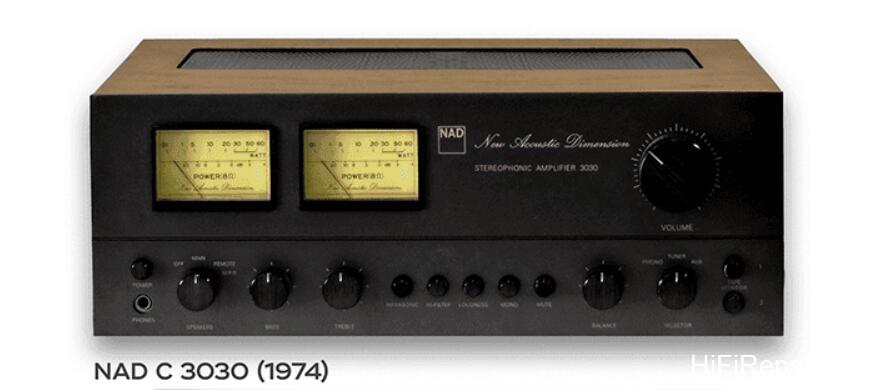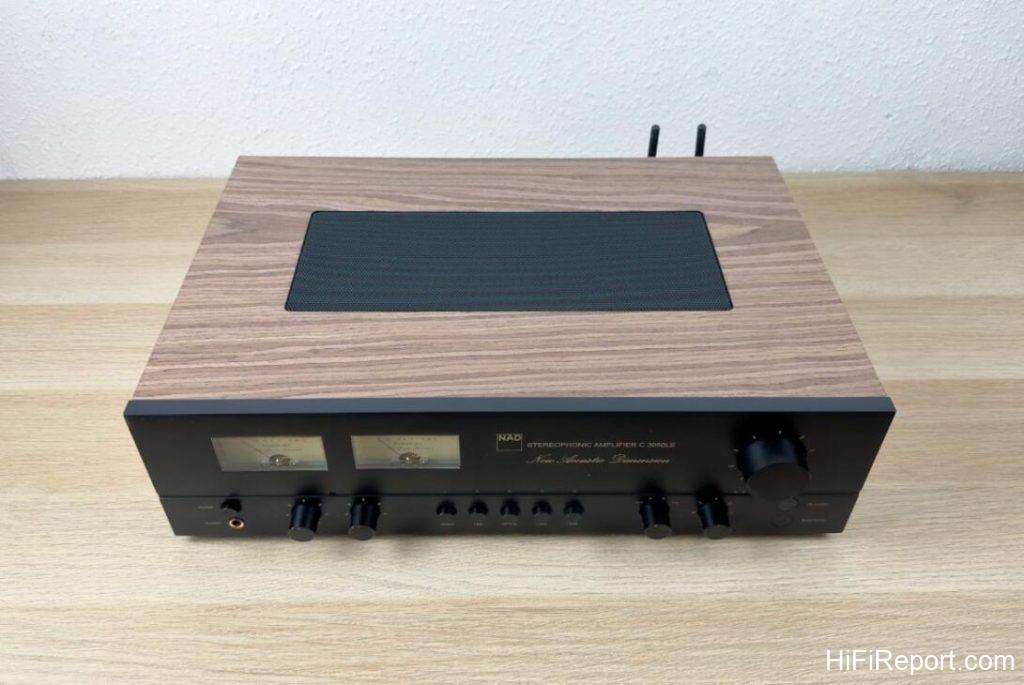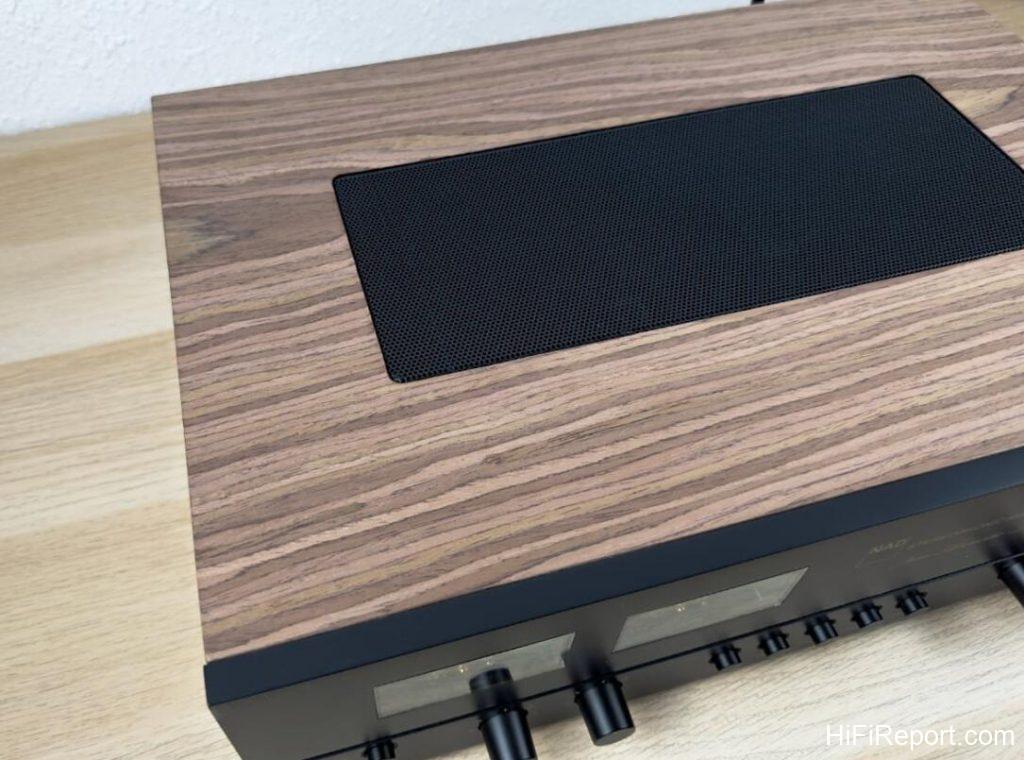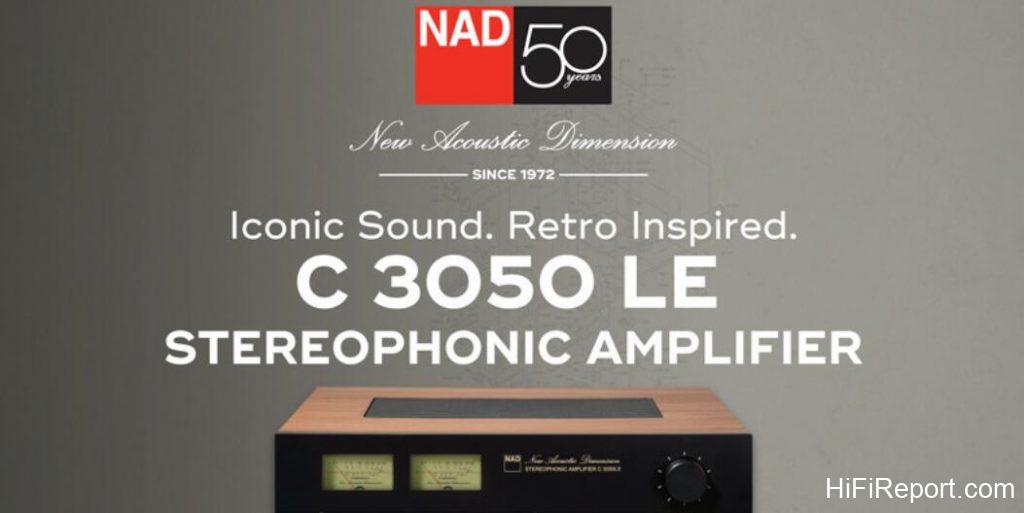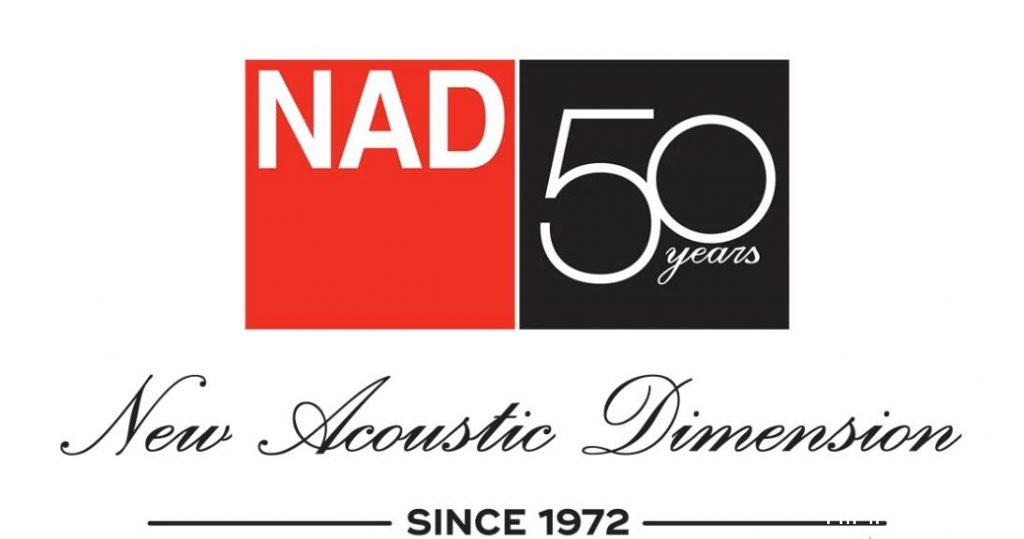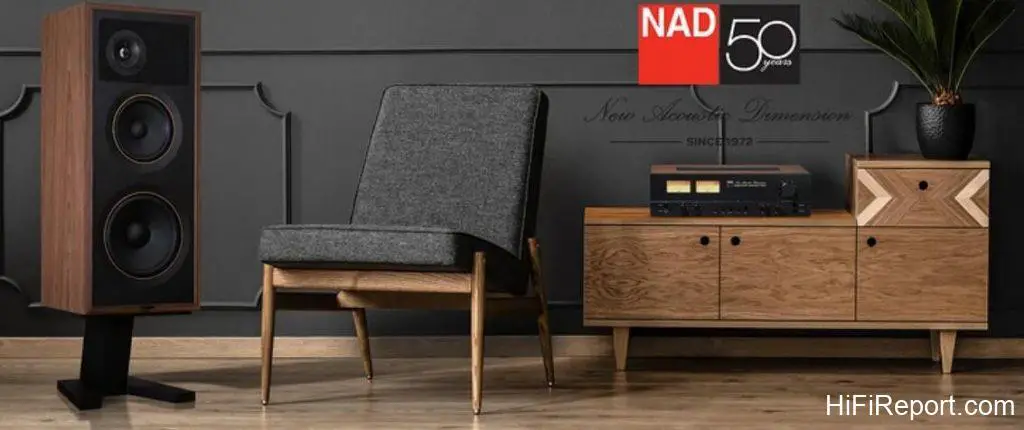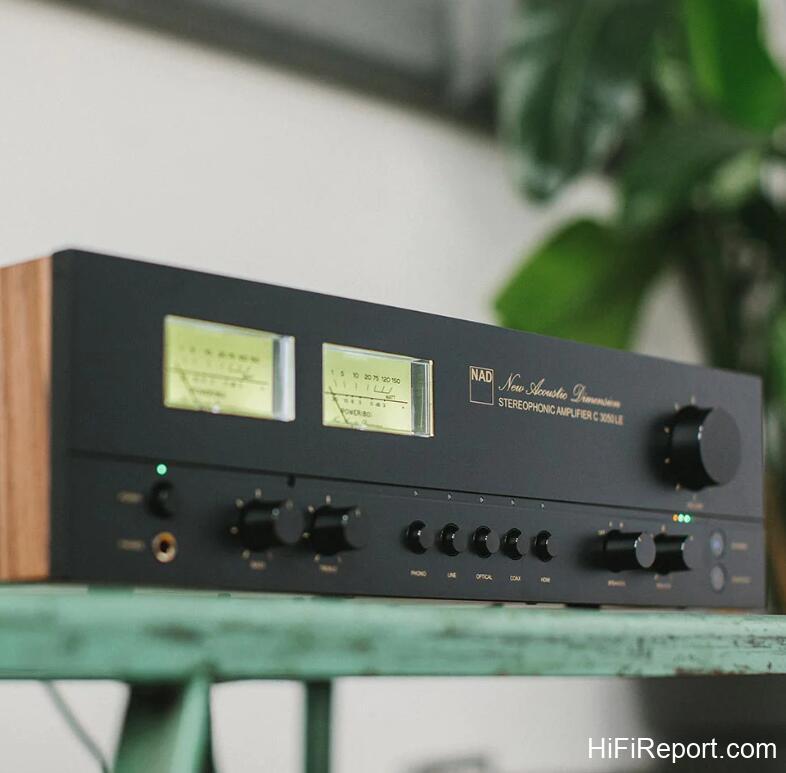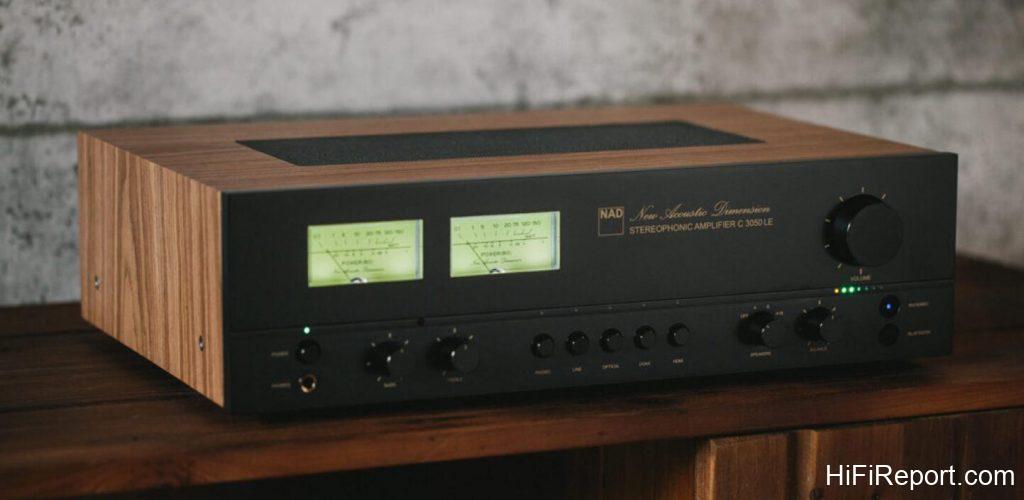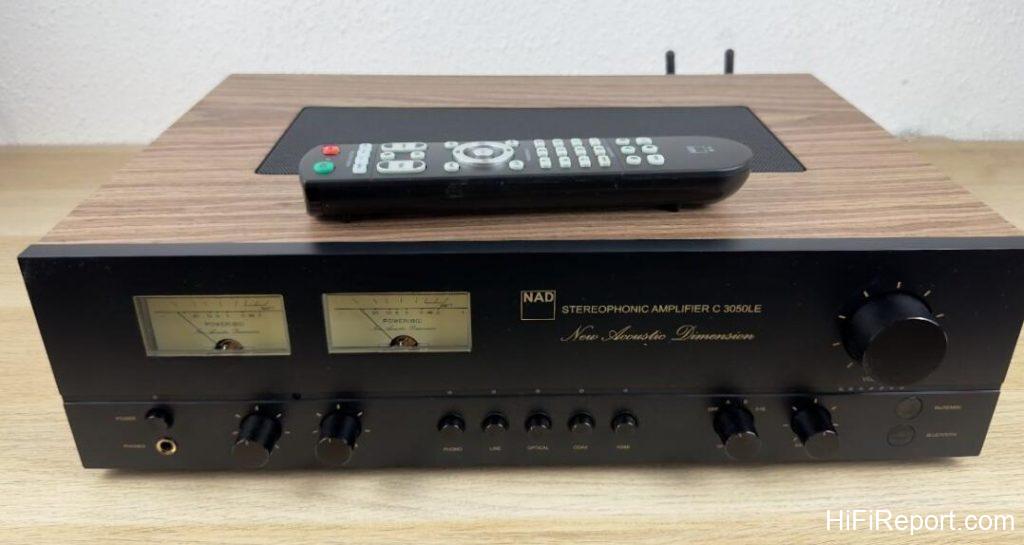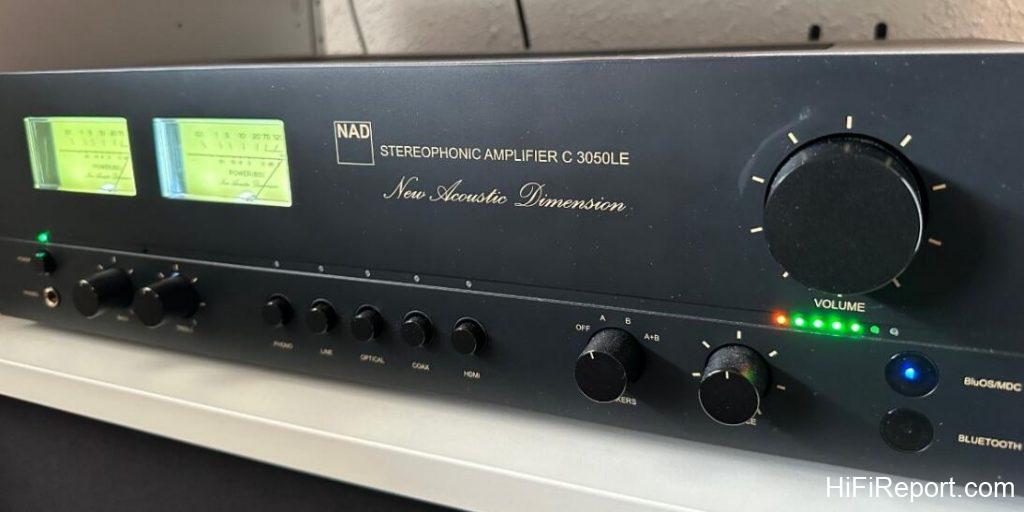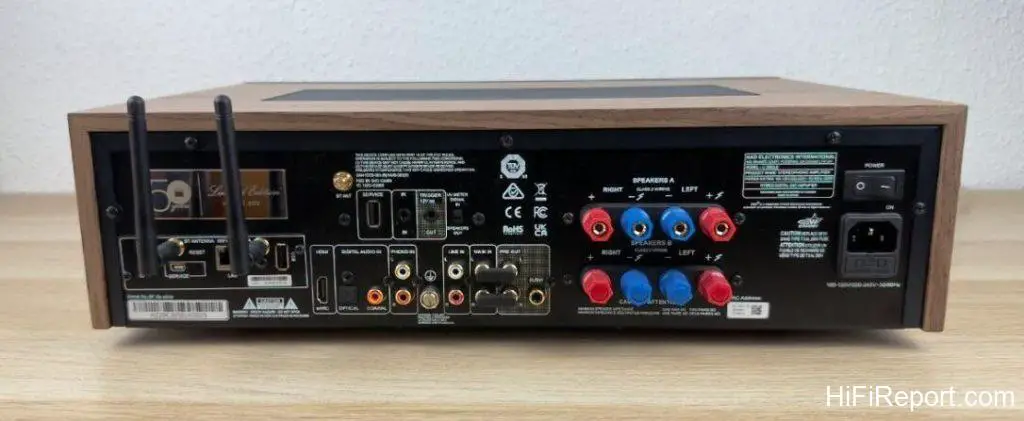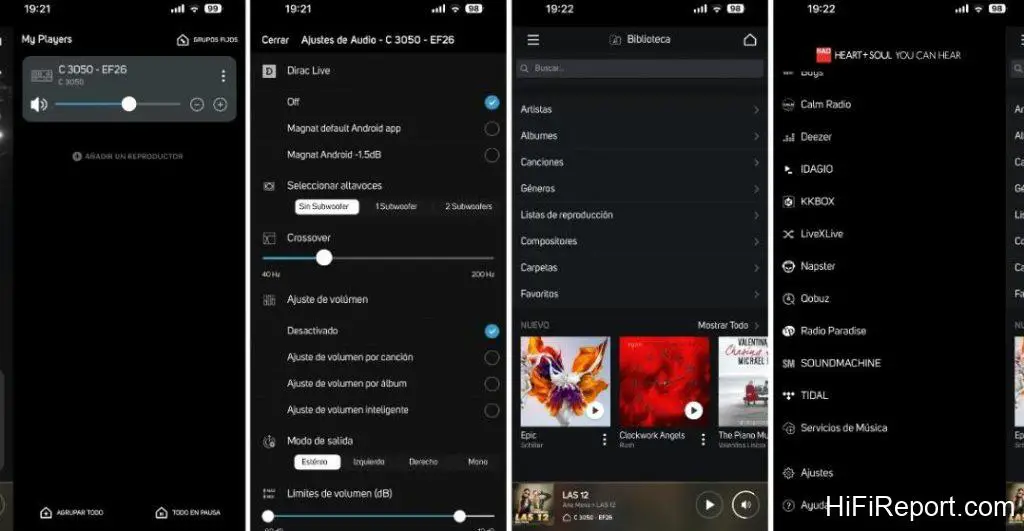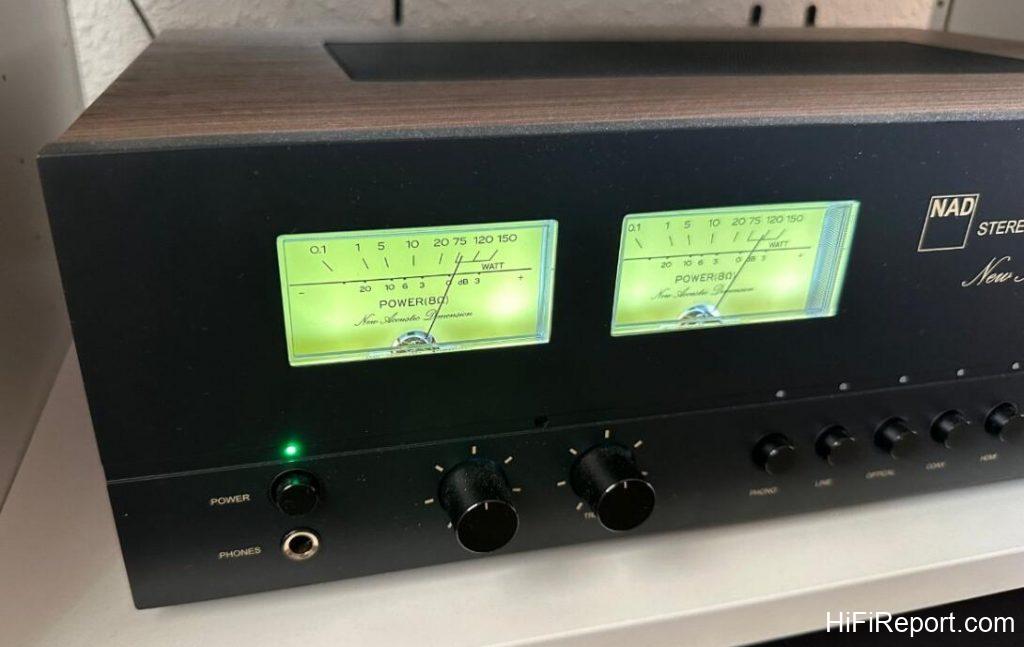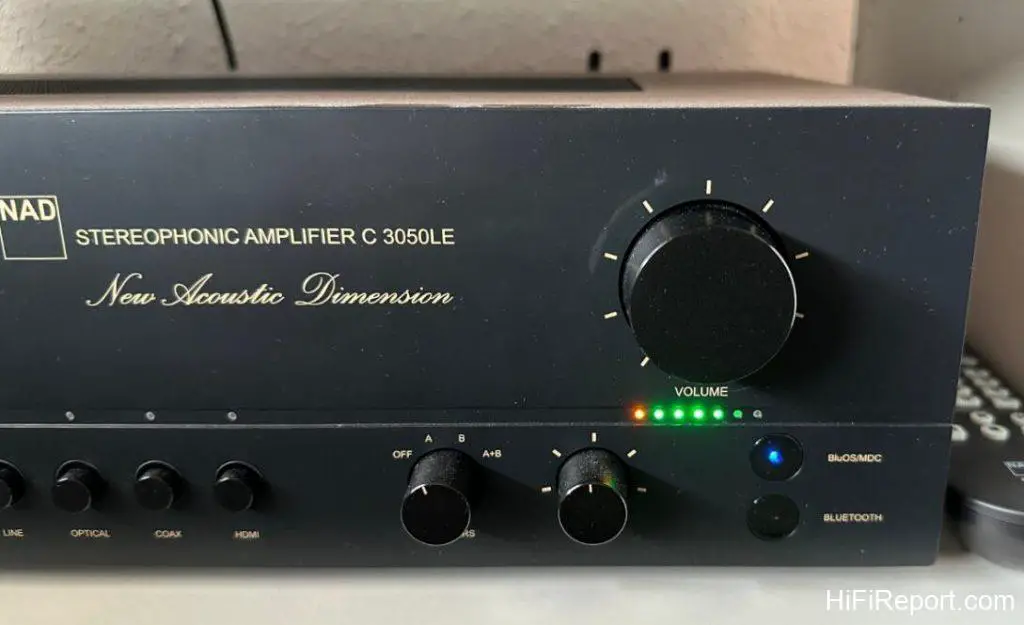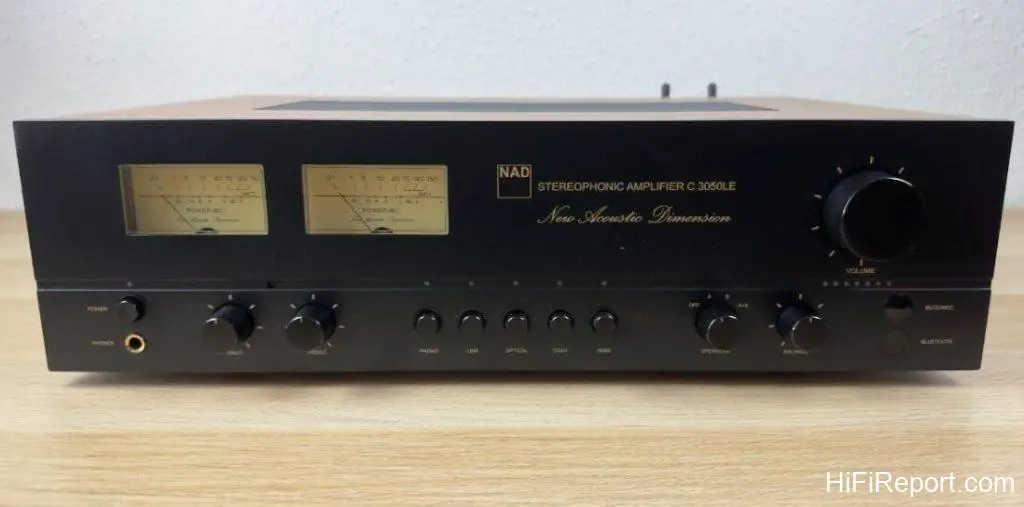NAD C 3050 LE Limited-Edition Amplifier Review
In 1972, Dr. Martin L. Borish, an electrical engineer with a Ph.D. in physics, founded NAD Electronics. Therefore, this renowned Canadian audio company celebrated its 50th anniversary last year. To commemorate this milestone, they introduced the NAD C 3050 LE, a hi-fi integrated amplifier with a retro design, paying homage to the classic NAD 3030 amplifier from the 1970s.
The NAD C 3050 LE is a limited edition amplifier, with only 1,972 units produced worldwide, each uniquely numbered. However, its value goes beyond its limited availability, as it incorporates many of the latest technologies in amplification and transmission.
About NAD
The founding of the NAD brand in 1972, under the guidance of Dr. Marty Borish, took place in the UK. NAD established a core principle of prioritizing value as its brand identity from its inception. NAD’s product designs are characterized by simplicity and rich content, devoid of flashy lights and extravagant aesthetics.
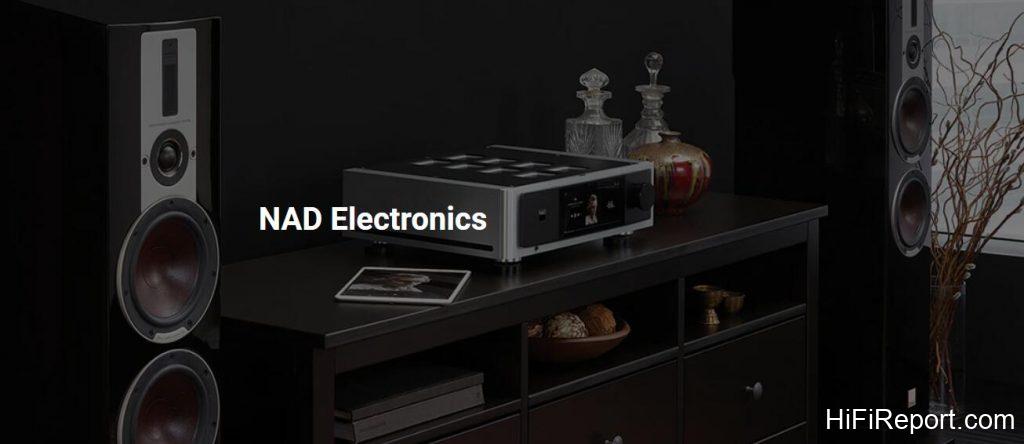
There’s also a commitment to avoid mysticism in marketing and promotion. This adherence to a scientific and value-driven approach aligns well with enthusiasts who prioritize science in pursuing high-quality audio and video experiences.
In 1978, NAD introduced its legendary 3020 stereo amplifier. Despite its nominal power rating of just 20 watts, it incorporated groundbreaking Soft Clipping circuitry, allowing it to drive even power-hungry speakers effectively. Its sound quality was exceptional, and it quickly gained fame, becoming a household name and an iconic entry-level amplifier.
Ultimately, the 3020, following a value-oriented path, achieved a remarkable global sales record of 800,000 units, making it the best-selling high-fidelity amplifier in history and solidifying NAD’s reputation.
In recent years, NAD has revived the 3020 model by introducing the D3020 stereo digital amplifier. The D3020 has also earned a revered place on various recommended entry-level HiFi equipment lists. Equipped with a 24/192 DAC, NAD’s renowned PowerDrive technology, multiple connectivity options including Bluetooth, and even an integrated MM phono stage, the D3020 boasts a nominal power rating of 30 watts.
However, its IHF dynamic power can reach up to 150 watts at 2 ohms, making it more than capable of easily driving entry-level bookshelf speakers. When asked to recommend an entry-level hi-fi amplifier, the D3020 is undoubtedly among the top choices.
In 1984, NAD introduced the NAD 2200, featuring a Power Envelope design. This particular machine holds significant importance in NAD’s history. It utilized Class G amplification, which could activate a second circuit for increased dynamic power output, providing excellent control for dynamic audio scenarios.
This functionality later evolved into NAD’s well-known PowerDrive technology. With PowerDrive, a NAD amplifier rated at 50 watts could deliver double or even quadruple the power output (100W or 200W) without distortion during dynamic peaks. The NAD 2200 can be considered one of the cornerstones of modern NAD.
In the 1990s, NAD was acquired by the Lenbrook Group and relocated its headquarters to Canada. This injected new vitality into NAD, expanding its product lineup. After 2002, NAD entered the home theater amplifier market. During this period, in 2009, I set up my 7.1.4 home theater system.
I first became acquainted with NAD as an AV home theater amplifier brand. NAD’s AV amplifiers, typical of European and American sound characteristics, were reasonably priced, making them one of the few European and American brands to compete directly with Japanese AV amplifiers. They followed a different technological path.
The release of the T 765 home theater AV amplifier in 2007 marked a groundbreaking use of modular MDC (Modular Design Construction) design. AV amplifier upgrades are typically ordinary, with Japanese brands releasing new product lines every 1-2 years.
NAD’s MDC module design allows quick upgrades by simply plugging modules with the latest features into dedicated slots on the AVR’s rear panel. The T 765 AVR, which is 16 years old, can still support the latest technology standards like Bluetooth, Wi-Fi, Dolby Atmos, and music streaming through these upgrades. This is remarkable, as AV amplifiers from the same era are usually considered obsolete. With further development, NAD’s stereo amplifier product line also gradually adopted MDC modular upgrades.
Entering the 2010s, with the rise of the internet, traditional record and CD markets declined significantly. Streaming platforms like iTunes became the future, offering much greater convenience than physical media. Unlike some traditional legendary brands, NAD actively embraced the internet and released the M50 CD/streaming media player.
Remember this machine; it marked a crucial milestone in NAD’s development. The system integrated into this machine eventually evolved into BluOS, the high-fidelity industry’s mainstream high-resolution multi-room streaming platform.
Design
As I mentioned at the beginning of this article, NAD aims to pay tribute to its most iconic amplifier product from the 1970s with the NAD C 3050 LE Limited Edition Amplifier. They have crafted an almost perfect replica of the NAD C 3030 to achieve this, with only minor tweaks.
Therefore, the NAD C 3050 LE features the same genuine walnut veneer on its front panel, deep gray front panel, and ventilation grille in the upper area, just like the classic product from 48 years ago.
You’ll find the New Acoustic Dimension logo on the front panel in the original 1970s font, dual VU meters, and button controls for various functions. When examining these controls, you’ll notice some differences in control details compared to the older model, but they have been faithfully reproduced with as much accuracy as possible. Some functions have been rearranged, and some have been omitted because the technology has become outdated.
From left to right, there’s a power button that looks like an old mechanical button but is digital. Below the power button, there’s a 6.35mm headphone jack. Behind them are two knobs for adjusting bass and treble (which can also be disabled from the app) and five other buttons, each with its indicator light. These buttons are primarily used for selecting input sources.
In addition to these buttons, there are two more knobs for toggling between (or simultaneously activating) two sets of speakers and adjusting left-right balance. Then, on the far right of the front panel, there are two indicator lights for BluOS and Bluetooth. Above them, a large volume knob and a small LED visually indicate the volume level.
NAD has given its volume knob a vintage look thanks to retaining the damping feel of volume knobs on past devices. However, in reality, you can smoothly turn the knob, meaning it’s not a stepped knob.
We need to control the amplifier’s volume remotely, so it either adopts this approach or uses a mechanical motor-driven potentiometer, which would drive up the device’s cost. Nevertheless, even with this consideration, it’s one of the aspects I like the least about this amplifier. It feels somewhat odd, and in reality, rotating the knob a full circle only results in a change of a few dB in volume.
In the top left corner, there’s a VU meter. When the amplifier is powered on, it lights up in a striking light red color, and when the device is ready to operate, it changes to a soft yellow hue. On the other hand, through a switch on the rear panel, we can toggle the meter on the front panel to display input or output signal levels.
Now that we’ve analyzed its design let’s delve into the technical configuration of the NAD C 3050 LE. The retro design on the outside doesn’t continue within because it’s essentially a device incorporating the latest technology.
NAD employs the HybridDigital UcD amplification system, a well-known choice many manufacturers use in their amplifiers. This unit can provide each channel with a continuous power of 100W at both 4 and 8 ohms, with instantaneous power peaks of up to 135W per channel.
On the other hand, the digital section is built around the Texas Instruments PCM5242 high-resolution DAC. It’s a high-performance DAC chip capable of handling up to 32-bit/384kHz resolutions. However, the NAD C 3050 LE supports a maximum high-resolution audio of 24-bit/192kHz.
The C 3050 LE also incorporates NAD’s latest modular design construction technology and is equipped with the MDC2 BluOS-D module. This addition brings two new features: Dirac Live room correction and music streaming, thanks to the BluOS system.
We’ve discussed BluOS in several reviews; it offers access to over 20 mainstream streaming services and our digital libraries. Through BluOS, we can access services like Amazon Music Ultra HD, Deezer, Qobuz, and Tidal. It also lets us play our digital files from storage devices or network equipment (such as NAS) connected to the amplifier. BluOS supports MQA decoding and rendering. And if that’s not enough, BluOS provides access to thousands of internet radio stations.
On the other hand, the MDC2 BluOS-D module is compatible with Apple’s AirPlay 2, allowing us to stream audio from Apple devices to the NAD C 3050 LE. It’s also compatible with Spotify Connect and Tidal Connect, enabling us to select music within the apps of these services and effortlessly stream it to the amplifier.
With the MDC2 BluOS-D, we can also integrate the NAD C 3050 LE amplifier into a multi-room music system with up to 64 zones, each having independent source and volume control. If we have other compatible devices, we can play different music in various zones or group zones to play the same music simultaneously. The bidirectional architecture of MDC2 allows BluOS-D to stream music from any signal source connected to the C 3050 LE to other rooms with BluOS-compatible components.
In addition to network streaming, the MDC2 module also adds support for Dirac Live. We’ve discussed this room correction system in detail so I will keep that topic the same. The NAD C 3050 LE includes a basic version of the Dirac Live license, and if you want to use the full-featured version, you’ll need to purchase it (priced at $99 on the Dirac website). It also comes with a reasonably good calibration microphone with a USB connection.
Now that we’ve covered its wireless connectivity section, let’s look at its interfaces. On the rear panel of the NAD C 3050 LE, you’ll find a comprehensive set of digital and analog inputs, allowing you to connect all your signal sources seamlessly.
In the MDC2 module, we have an Ethernet port, a USB port, and two antenna connections (for Bluetooth and Wi-Fi). Other connections include:
- An HDMI eARC port.
- A digital optical and coaxial input.
- An MM phono input.
- Two RCA analog inputs.
There’s also a preamp output for external amplifiers, an infrared input, a 12V trigger output, and a second antenna for enhancing the Bluetooth signal.
Lastly, the NAD C 3050 LE features two sets of speaker binding posts, a subwoofer output, and a dedicated headphone amp output. It also has bidirectional aptX HD Bluetooth capability, meaning you can stream music from mobile devices to the amplifier and transmit music from the amplifier to wireless Bluetooth headphones.
Sound Performance
In acoustic terms, the NAD C 3050 LE is similar to the NAD C700. This is logical as we’ve seen the same amplification system inside, even though this model offers more power. Please note that this is good, as the C700 provides high performance and top-tier sound.
The NAD C 3050 LE delivers a warm, pleasing sound with rounded bass and a clean, expansive midrange. This is a surprising sound because Class D amplifiers often sound overly cold. However, NAD’s HybridDigital UcD system brings a warmth that reminds you of Class AB amplifiers.
On the other hand, the NAD C 3050 LE offers excellent dynamics and can create a broad soundstage with outstanding depth. Of course, it delivers a very detailed sound characteristic of Class D amplifiers but always with a very nice warmth.
I was a bit disappointed initially because, in my view, the amplifier’s power didn’t seem substantial, with 100 watts integrated per channel, which felt odd. It was when I conducted further testing that I understood why. It was when I decided to raise the volume via my smartphone rather than the knob on the unit.
Turning the knob to increase the volume required many rotations, and I didn’t like how large the volume had to be set on the unit. But when I increased the volume via my phone, everything changed. Now, it showcased its capability fully, with each channel’s 100W power sufficient to perfectly fill the entire room. So, having a completely linear volume control didn’t benefit us.
Of course, if we enable Dirac Live room correction, we’ll lose about 6 dB of volume, which is quite common in this system.
Conclusion
I love the NAD C 3050 LE. It combines a perfectly executed retro appearance with high-quality materials and a focus on detail. What’s best is that it achieves this without compromising on fully modern internals, offering all the digital features we currently have in the market.
It is a top-notch integrated amplifier if we momentarily set aside its retro appearance. It boasts a D-class amplification with NAD’s HybridDigital UcD system, 100W per channel, excellent connectivity, the BluOS system for reproducing streaming services and digital files, and the Dirac Live room correction system.
In summary, this amplifier is worth considering if you prefer something other than the mainstream large-screen digital designs. As mentioned, the NAD C 3050 LE is a limited edition, with only 1,972 units produced. However, despite being a limited edition, I’ve found it’s still available on the market.
